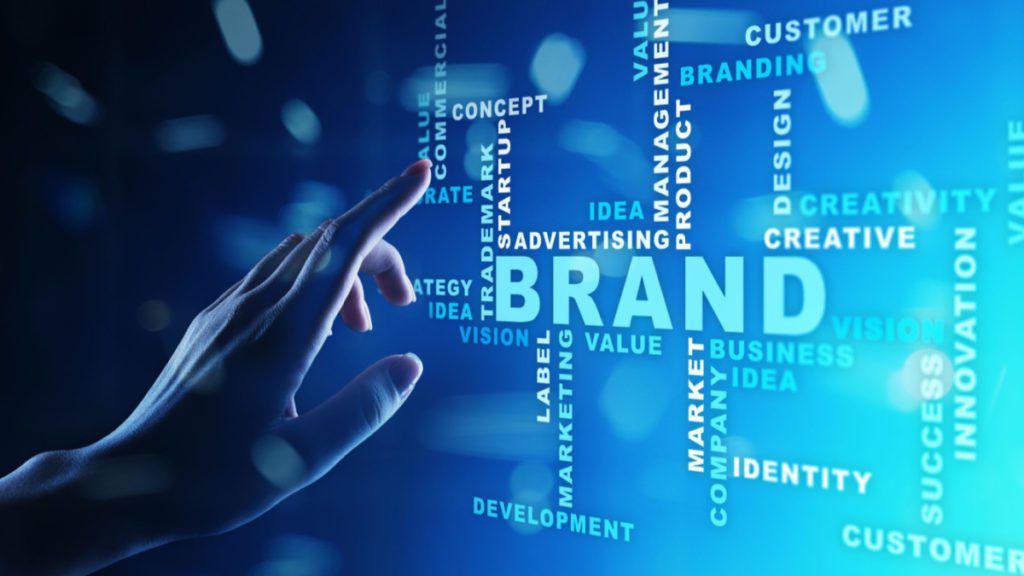In the world of business, a recognized brand has always been important. In fact, it feels strange to write this piece. But in talking with my fellow Acceleration Economy analysts, my comrade and agency CEO Brandon Friesen, and seeing Microsoft, IBM, and SAP bring to life their brands onstage last month at Cloud Wars Expo, it’s time to re-examine and understand the role of brand in an acceleration economy.
What’s Behind the Re-Emergence of Brand
Many leaders associate brand or brand building with advertising campaigns or brand identity (logo, color pallet, visual cues, etc.). Brand advertising and marketing campaigns and brand identity play a vital role in amplifying your brand and company recognition, but, on their own, struggle to create business relationships and stimulate purchasing.
Brandon Friesen, CEO of JUST Global, a leading global B2B marketing agency, sums up the power and importance of brand this way:
“Brand has never been more essential in creating customer relationships and recurring brand loyalty. With a majority of B2B buyers favoring a sales rep-free buying experience, brand must serve as the spark, personality, and entry point of business relationships.”
So, what’s different today? Why are we seeing the re-emergence and focus on brand, especially in the B2B world?
- Digital and virtual experiences are your brand. B2B buyer-brand relationships are different today. You rarely see or experience the people behind the brand. Your brand value is judged by the experiences you deliver and the moments you create increasingly digitally through elegant technology and the smart use of data. Customer interactions are increasingly in your product via product-led growth strategies, accessed via apps in the cloud, and through partnerships that make up a company’s supply or value chain.
- Company mission, purpose, beliefs, and values are your brand. Customers and investors alike want to know what your company stands for and behind. Customers want to understand a company’s stance on important values such as diversity, inclusion, and sustainability. At the same time, many investors will not invest if the company does not have clear environmental, social, and corporate governance (ESG) guidelines.
- Selling ideas and movements are your brand. When we think of B2B, we think of selling products or services. Today, the most effective companies actually sell and market the need, the problem, or the opportunity first, then follow with their solution. Why? Business buyers respond and engage much more deeply. B2B leaders turn to preferred companies and brands to understand what’s needed and what’s possible, not just as a vendor or supplier of products, but as business partners.
An Essential Ingredient in Revenue and Demand Generation
In B2B go-to-market and marketing conversations, we strive to create and mimic the best practices of top B2C companies. One of the most powerful practices is the focus B2C companies have on creating experiences and making human connections, including through investment in brand development, to sell their products. Well, guess what — business buyers are consumers, too. They, often unconsciously, begin their brand relationships with some form of emotional connection. This could be as simple as positive recall or feelings of the brand all the way through to perception of value and trust. Buyers want the comfort of a known quantity AND the social proof of innovation. From there, buyers tend to focus more consciously on the rational connection — business case, features, functions, value, etc.
Busting a long-held B2B brand myth, brand is an essential ingredient in driving demand for commercial products and services. B2B sales and marketing teams tend to focus solely on lead generation as the best way to create demand for their products and services. As my fellow Acceleration Economy analyst Tony Uphoff puts it ”…an unbranded lead is pretty much useless.”
Based on hundreds of B2B brand-to-revenue engagements and tens of thousands of campaigns, Friesen articulates the necessity for brand development, not just brand identity: “A strong brand creates demand. It generates pricing power — read: you can charge more. It increases sales response — read: it increases conversion rates in the funnel. It drives loyalty — read: ARR (annual recurring revenue). Smart business leaders also think of their brand as a way to build stronger relationships — think Annual Recurring Relationships.”
Defining and Cultivating Your Brand to Reflect Today’s Buyer and Marketplace
Now is an ideal time to re-think the role of brand across your business. Not just a brand identity makeover, but what your brand stands for and how your customers and communities experience your brand. This process starts by taking a fresh look and defining three critical brand elements:
- Brand Mission — “the whole body of your brand.” The mission describes what your brand aims to achieve and how you will achieve it. The brand vision statement defines where you want those achievements to lead in the future for your company, brand, culture, people, and purpose.
- Brand Vision — “the brain of your brand.” The ideas and “north star” behind a brand that help guide the future. When the brand vision aligns, it reflects and supports the business strategy, differentiates from competitors, resonates with customers, energizes and inspires employees and partners, and becomes the compass for the company.
- Brand Essence — “the soul of your brand.” The brand essence definition exists at the core of your company’s growth strategy — it brings everything together. Your essence brings together concepts like values, mission statements, and brand visions to determine what you stand for as a company.
Double Down, Focus, and Invest in Your Brand to Win Bigger as Markets Correct and Re-Calibrate
Most executives are hesitant to invest in brand during uncertain and uneven times, designating brand development as an expense. I would argue brand is a critical, differentiating investment, and now is the right time to double down on:
- Ensuring your brand value mission, vision, and essence are aligned with the buyers and markets you serve.
- Infusing and creating brand stories in every touchpoint of your buyers’ journey and sales, marketing, and customer process, including demand generation.
- Elevating brand understanding and initiatives across the organization, empowering every employee to unleash the power of your brand.
- Harnessing your brand’s attributes and differentiation to both dazzle and increase customer relationships and revenue.
Your company brand is an important asset, becoming more critical as business buyers, employees, and partners all expect more from their providers. Companies not only have to deliver value, but business brands must also demonstrate and live by their values.
If you missed Cloud Wars Expo in person, you’re in luck. Now available for free to Acceleration Economy subscribers: Approximately 40 hours of on-demand cloud and CXO education content featuring more than 100 speakers.
Want more tech insights for the top execs? Visit the Leadership channel:










